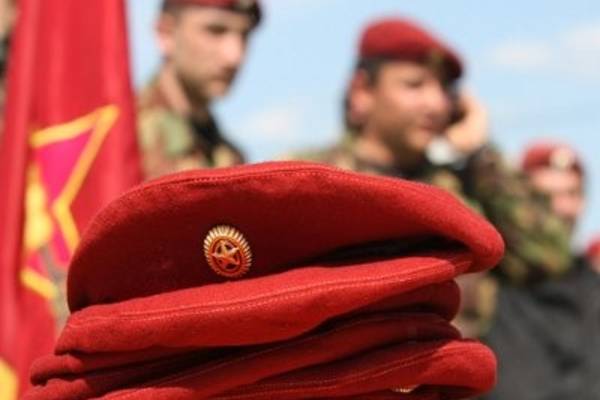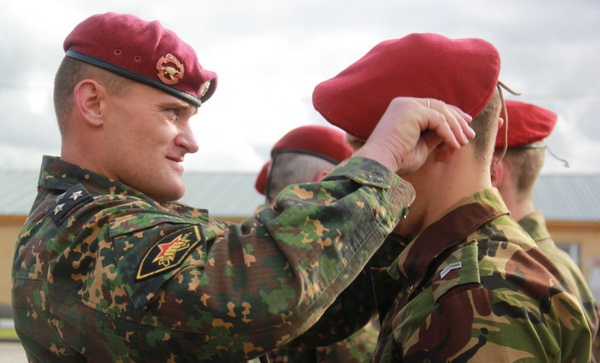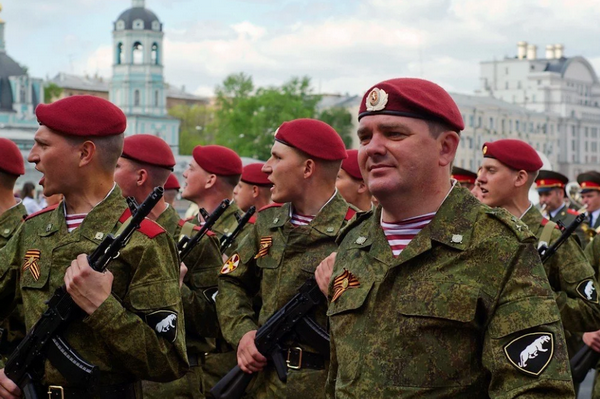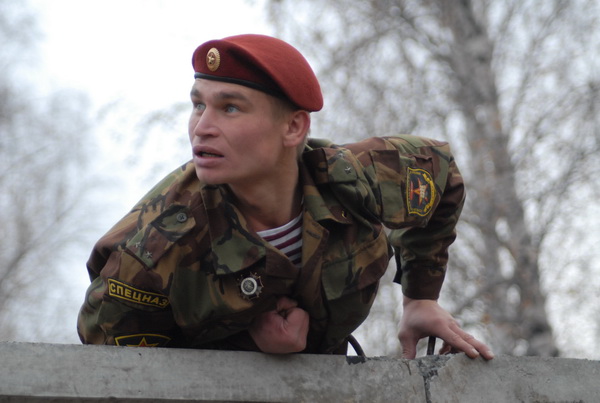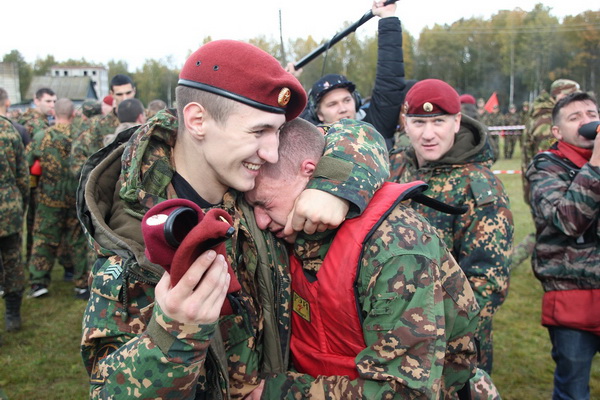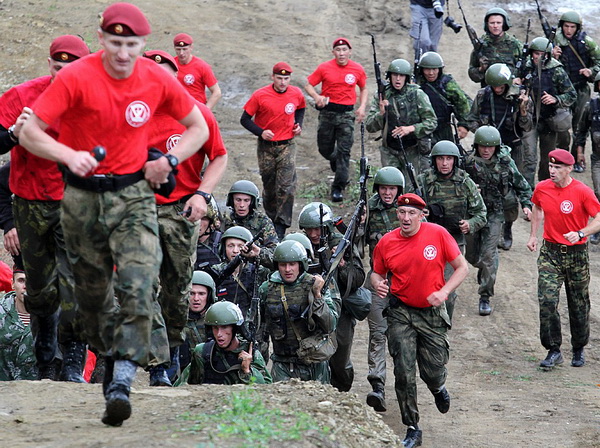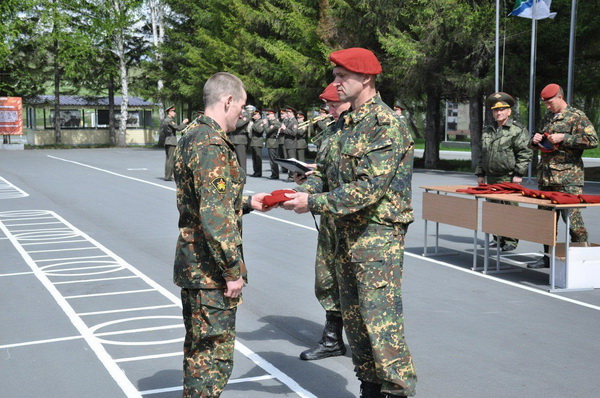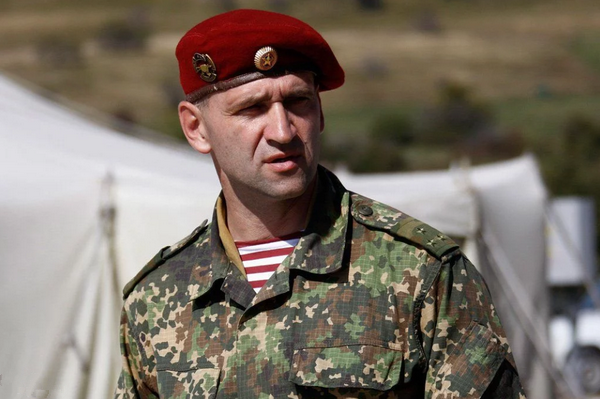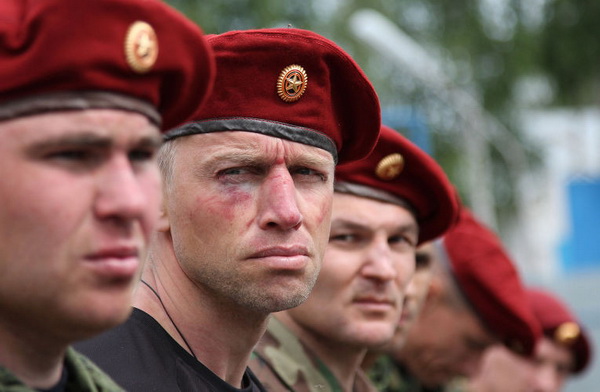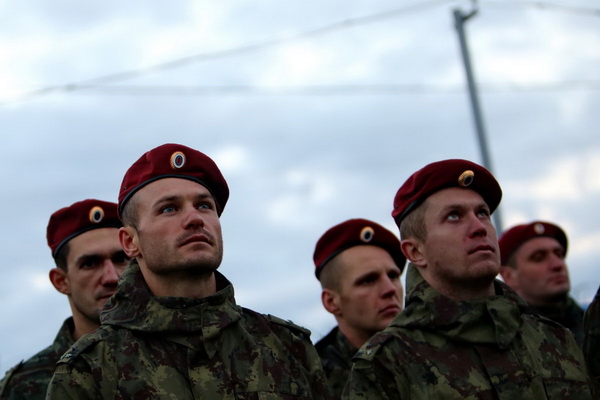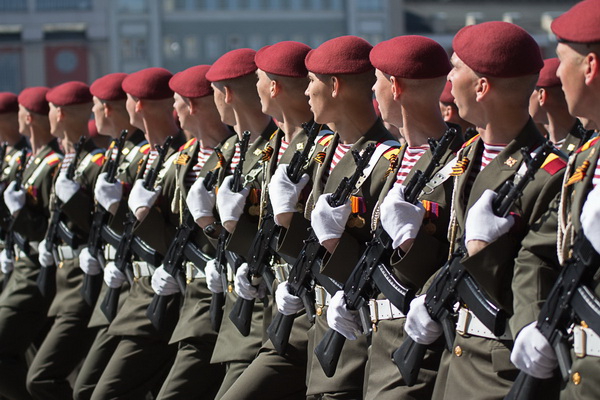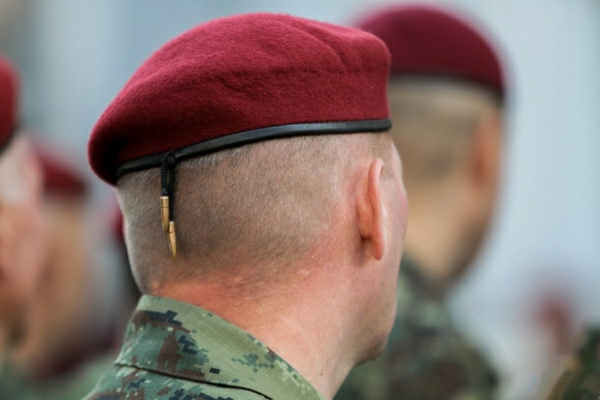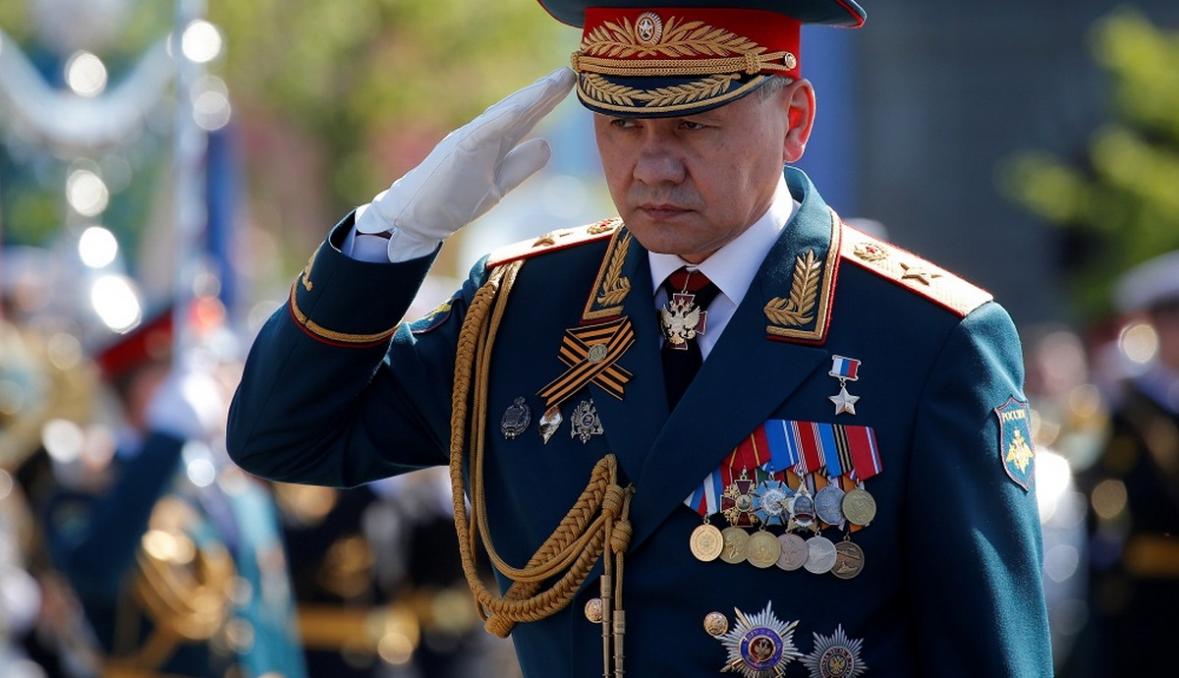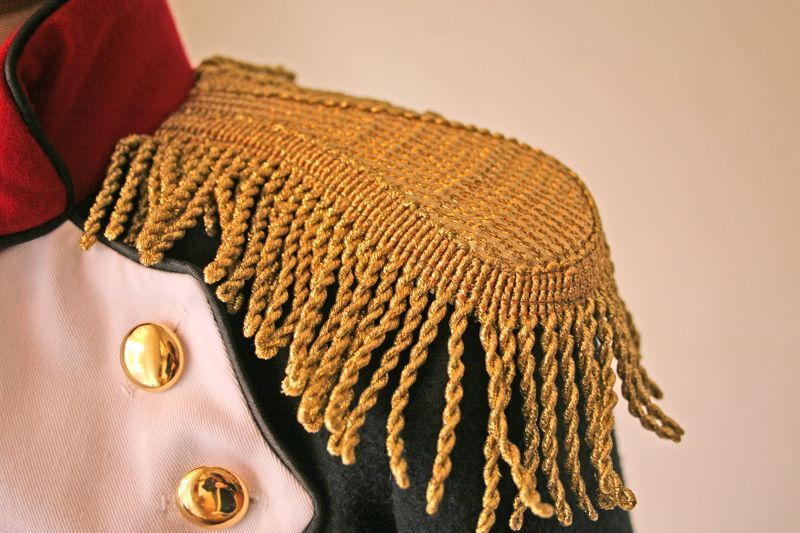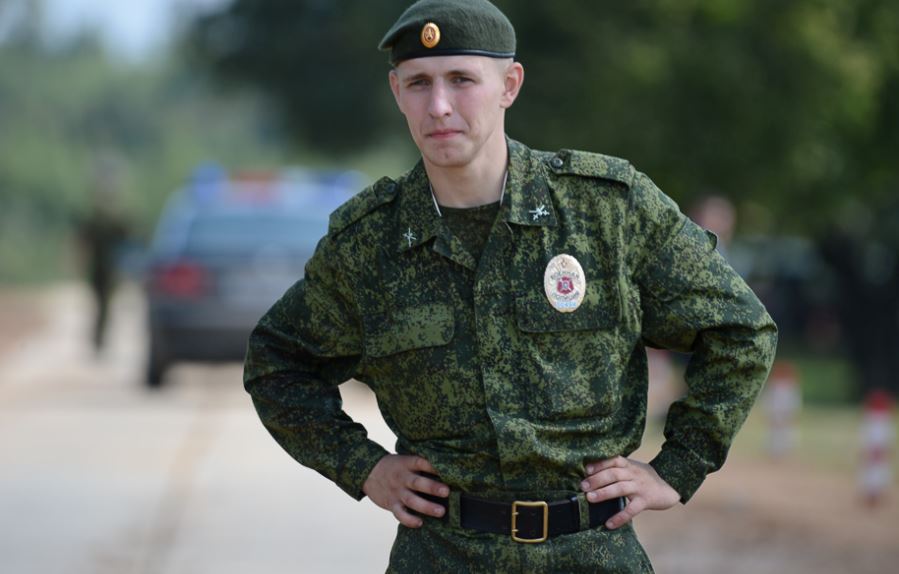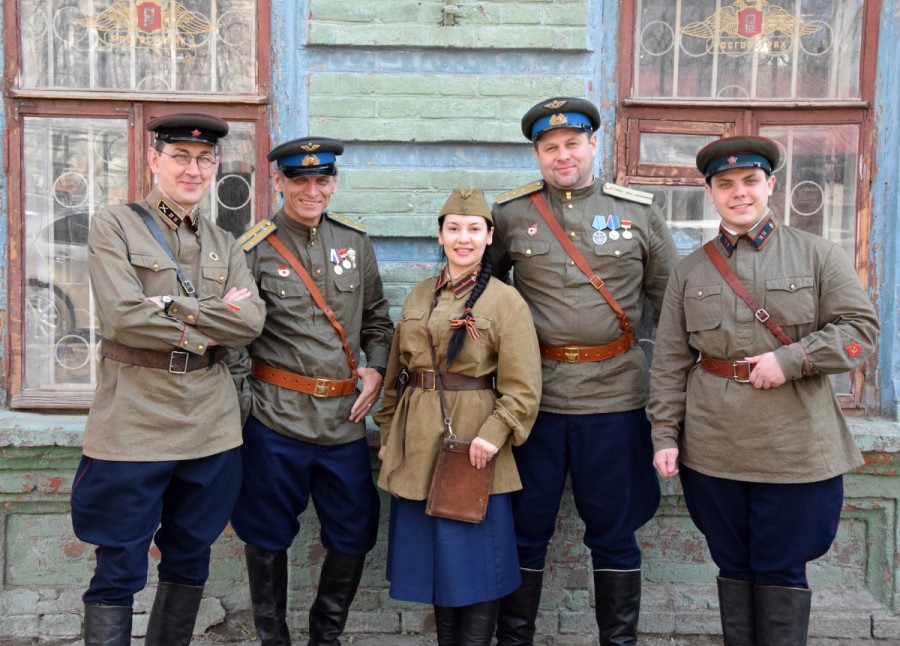Among young people who dream of becoming military or special services employees, there are real legends about those who wear maroon berets. We are talking about the elite of the domestic special forces. Everyone who is going to connect their lives with the defense of the Motherland knows about red berets, what troops these valiant warriors represent. How to earn the right to wear this headdress, how qualification tests and the ceremony of presenting the accessory are held - they should also familiarize themselves with this information.
Features of the accessory
The red beret is a mandatory element of the uniform of elite units of the national army. In Soviet times, it was a distinctive feature of those who served in the internal troops. Now, representatives of the National Guard and employees of special forces have the right to wear a maroon beret. To do this, they must pass qualification tests.
The headdress is also called crimson. Only the best make it to the exams, since the tests are considered the most difficult.
The beret is a traditional headdress of military units in the USSR and modern Russia. It is also worn in the armies of other countries. The colors of the berets differ depending on the branch of the armed forces. In the Russian Federation, similar headdresses are worn by the Air Force and the Airborne Forces. Blue berets are considered part of their official uniform. Since 1995, this headdress has depicted the coat of arms of the Russian Federation. Since 1967, the Airborne Forces beret has been crimson. At the military parade in the first year of its appearance, the troops marched in the new uniform. The crimson-colored Airborne Forces berets were abolished the following year.
Navy special forces can wear a black beret. It is accompanied by a striped vest with dark blue stripes. Also, headgear of this color is worn by those who join the tank troops of Russia, coastal units of the Navy, and employees of special forces units of the Ministry of Internal Affairs. By the way, the product experienced a second birth before the beginning of World War I. It was then that the beret was officially introduced in the tank troops.
The FSB border troops wear green berets. In Russia, the same headgear, only darker, is also worn by intelligence units. Military intelligence berets are fir or dark green.
Military police wear red headgear. Children – members of the patriotic movement YunArmiya – also wear a scarlet beret. There are also military personnel who wear this item – servicemen of the ground forces. Since 2014, it has been decided what color the general-purpose headdress of this type will be. Berets in the ground forces are camouflage in the “digital” color. They are not intended for parades. Units of the motorized rifle troops wear dark olive headdresses.
These are the main types of military berets. The branches of the armed forces that have the right to wear them are listed. This headgear is also common among the armies of other countries. For example, the beige uniform of the Special Air Service of the British Air Force is combined with a red beret. American rangers have beige headgear.

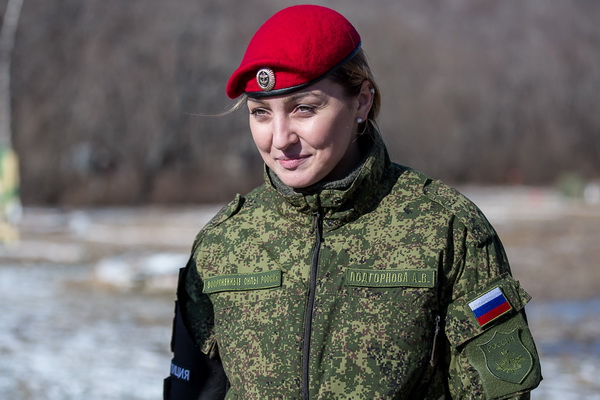
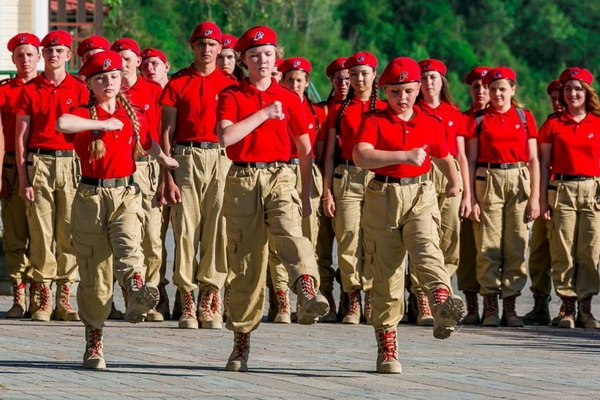
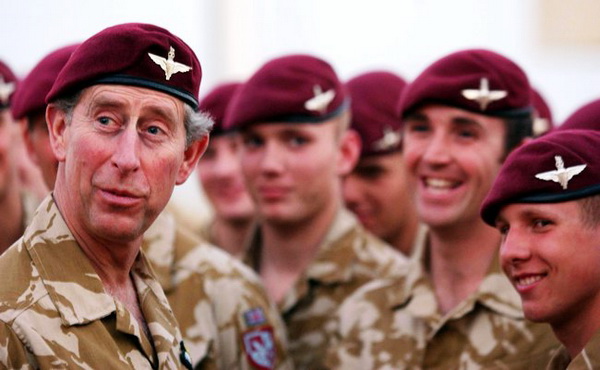
A bit of history
In 1978, Soviet army personnel were first issued maroon headgear. Which troops were allowed to wear red berets is a question that interests many, so it should be said that it was a privilege of the special forces of the Internal Troops of the Ministry of Internal Affairs. Initially, they were attached to the uniform of the Dzerzhinsky Division, an elite unit based in the capital and the Moscow region. The items matched the color of the shoulder straps. General Sidorov approved the idea. By his order, one of the textile enterprises sewed the first berets of this shade.
Until 1987, they were allowed to be worn during demonstration exercises. Officers of the Internal Troops wore berets on state holidays. Exactly one year later, the father of a member of Dzerzhinsky's division gave his son and his fellow soldiers an unexpected gift - 113 hats, which were made of maroon cloth. This was the authorized number of the company. With the unofficial approval of the unit's leadership, they were worn for any occasion in the following six months.
Then another tradition was introduced. It was invented by the company commander Lysyuk and his deputy, after reading the book by the former American special forces soldier Miklos Szabo, "Team Alpha". It told about the training of "green berets". It was separately emphasized that in the US special forces everything must be earned. You could get a beret by passing difficult exams.
In order to ensure the professional growth of their students and improve their training, an examination program was developed. Those who passed it automatically became representatives of the elite of the domestic special forces. The first exams were actually held underground, hiding them under the guise of regular training. Moreover, granting the right to wear a special forces beret only to those who passed the exam did not find support from the leadership. The command advocated that this should be a distinctive feature of the uniform of military personnel with any level of training.
The official document appeared in 1993. The Commander of the Internal Troops, General Kulikov, approved the Regulations on these tests. Only members of the special units of the Internal Troops were allowed to take it. In 1995, an order of the Ministry of Internal Affairs on the uniform of employees, military personnel of the Internal Troops appeared. This document secured the right to wear a maroon beret, its varieties for special forces. From the following year, OMON, SOBR, GUIN began to take the exam. The conditions of the tests differed with an emphasis on the tasks that a specific unit must solve.
In 2005, the president signed decree #531, dedicated to the military uniform. It noted that warrant officers and officers of the Internal Troops wear a cap with maroon piping. Three years later, the Ministry of Internal Affairs issued an order regulating all tests for wearing headgear. The procedure for passing the exam was finally streamlined. Since then, speculations about the symbol of the special forces have become a thing of the past; there are no more questions or doubts about who wears the red berets.
It is not only Russia that has introduced maroon berets; similar headwear can be found in Belarus, Uzbekistan, Kazakhstan and Ukraine.
How to deserve
To earn a red beret, one must pass a series of tests. Their purpose is to identify the most prepared servicemen, to form an incentive for the emergence of special morale in privates and officers. According to the current regulations, the tests start every year in September. They are divided into two stages.
At the preliminary stage, a final examination is conducted after completion of training, physical, tactical and fire training is assessed. Then testing is taken. At the main stage, in one day, you need to complete a forced march, overcome an obstacle course of increased complexity in conditions close to combat. In particular, you should pass a 3,000-meter run, do strength exercises, pull-ups.
Important Features of the Tests
During the testing, a serviceman can receive only three warnings. After that, he is eliminated. According to statistics, no more than 20-30% of participants make it to the second stage. That is why wearing red berets in the army is considered so honorable. Instructors do not have the right to provide any assistance during testing. Special attention is paid to the doctor's decision determining the soldier's condition.
Award ceremony
The headdress is presented at a general formation. In ceremonial conditions, the soldier is required to kiss it, kneel on his right knee and put it on his head. After that, he turns to the formation and shouts: "I serve the Russian Federation and the special forces!" After the ceremony, the test results are recorded in a report and entered by order. A corresponding entry is made in the military ID, and an official certificate is issued. Now a serviceman who has received a maroon beret can wear it with both everyday and dress uniforms.
Deprivation of the right to wear
The Council of Maroon Berets can deprive a soldier of this right. The unit commander submits an appeal to this body. This happens in the event of discrediting a military rank. Here are specific examples:
- Cowardice and weakness shown during battle.
- Mistakes that led to the death of comrades.
- Decrease in the level of training.
- Using special techniques outside the battlefield for personal gain.
- Hazing.
- Gross violations of the Criminal Code of the Russian Federation and military regulations.
Disciplinary sanctions for various violations can also lead to the deprivation of the honorary headdress.

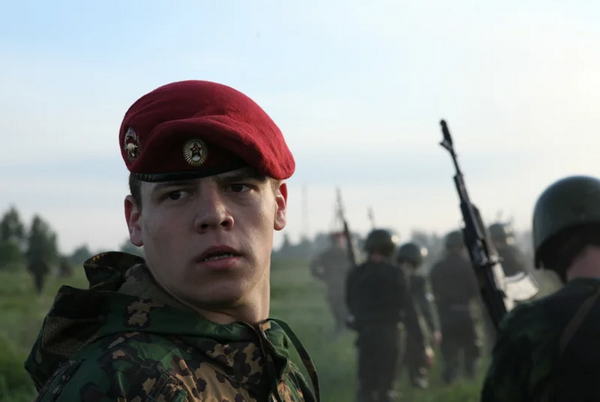
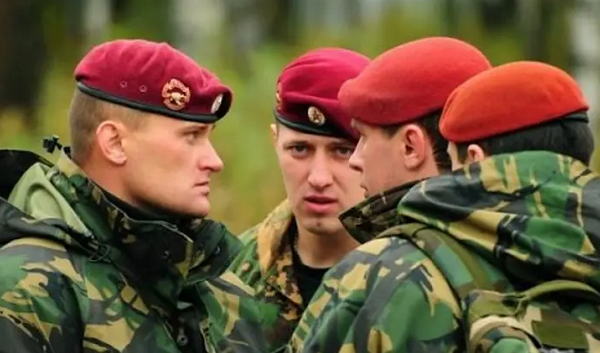


How to wear a hat correctly
The red beret should be worn on the left side. And all because, unlike other servicemen, for whom this color of headgear is required by the regulations, the maroon ones had to undergo the most difficult tests for this. This tradition came from the Vityaz unit, and the reason for it is quite simple: when the command "Fuel!" is given, the special forces soldier can only work with his left hand, since he holds a machine gun with his right hand.
Military police units wear a beret tilted to the left when participating in parades.
This beret does not belong to the products that are recommended to be decorated with flags. It is allowed to attach only the special sign "For Honor and Professionalism" and the emblem of the special forces of the Internal Troops. After removing the beret, it should be placed next to the heart, kept on the chest between the buttons or put in an inside pocket.
Video



